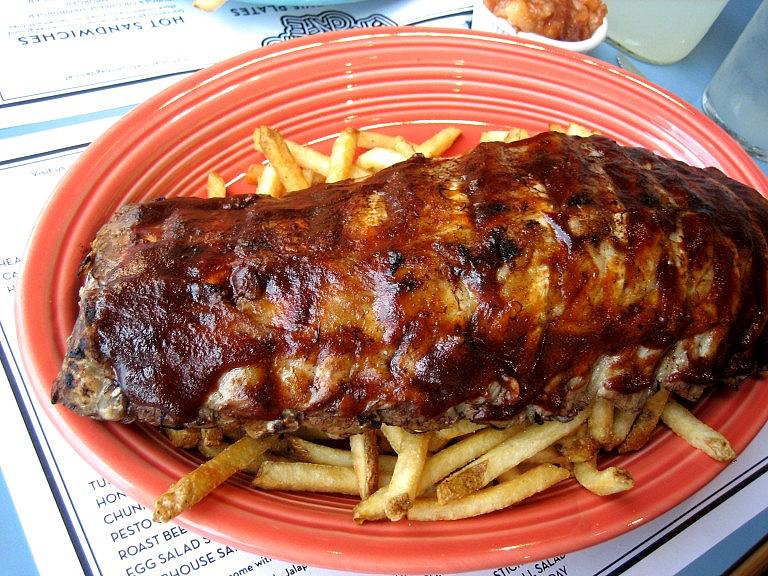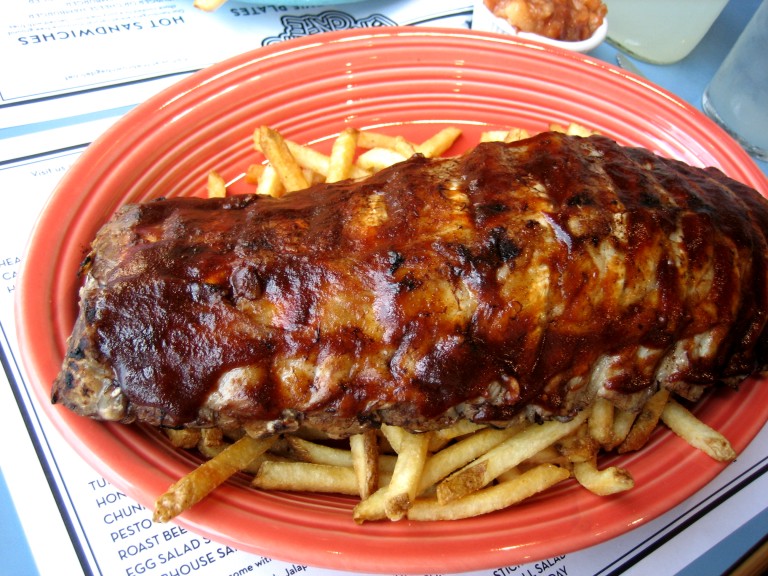Can Communities Make Restaurants Healthier? Ideas for Your Reporting

 An interesting new report from the Public Health Law and Policy advocacy group examines how communities might be able to push local restaurants toward offering healthier choices. Whether this is a good or bad idea depends on your political leanings, of course, but the authors make the case that it's worthwhile for communities to do so because Americans are spending more than half their food budgets on restaurant food, whose portions, fat and calories have only grown in recent years. As those portions grow, so do diners -and so do their health costs, some of which are paid by taxpayers.
An interesting new report from the Public Health Law and Policy advocacy group examines how communities might be able to push local restaurants toward offering healthier choices. Whether this is a good or bad idea depends on your political leanings, of course, but the authors make the case that it's worthwhile for communities to do so because Americans are spending more than half their food budgets on restaurant food, whose portions, fat and calories have only grown in recent years. As those portions grow, so do diners -and so do their health costs, some of which are paid by taxpayers.
American diners might welcome some changes: a new study published today in Health Affairs suggests that diners will accept smaller portions when offered in restaurants, even if the cost is the same.
In the "Putting Health on the Menu" report, the authors also contend that "healthy restaurant" policies and programs are important for health equity – making sure that low-income families and people of color have equally healthy choices:
People of color and lower-income people are disproportionately affected by the obesity epidemic and other diet-related chronic diseases. Further, research indicates that communities of color and lower-income neighborhoods are dominated by unhealthy restaurant options. In some places, fast food restaurants may be the only source of affordable food
Communities are trying to address the health effects of restaurant food in a variety of ways. Many regulate the number, density, and location of fast food outlets through zoning laws. Some public health departments and local policymakers use basic public health regulations to improve the nutritional quality of kids' meals. But those approaches are limited. Local business regulation is not yet possible in many places because the political will does not exist. Public health officials are often portrayed as "anti-business" when they propose new policies to require healthy options at restaurants.
Here are some takeaways for your reporting.
1. Federal Calorie Disclosure Law: The 2010 Affordable Care Act requires all restaurants that are part of a chain with more than 20 or more locations to provide nutrition and calorie information for their menu items – next to the items, if they're part of a salad bar or other self-serve station. Vending machines also would have to list calories of their items. For now, the requirements are voluntary until final rules are approved by the FDA. Are chain restaurants in your community complying with the law? Why or why not?
2. State and local restaurant laws. What laws apply to restaurants in your community? In California and New York City, for example, restaurants cannot use trans fats in their cooking. Are there rules limiting new fast-food outlets in certain areas where they already proliferate?
3. Know what you're eating. What do people really know about their restaurant meals, and do they eat differently at restaurants than at home? Diners can be fooled by healthy-looking menu choices like entrée salads that can top 1,000 calories. One study found that people underestimate the calories in restaurant dishes by an average of 600 calories. Children also typically eat more calories in restaurants than they do at home. Ask diners what they think about the nutrition and calories in what they're eating, and whether they'd make different choices if they knew exactly what their food contained. You might get some surprising answers.
Reporting Resources:
Putting Health on the Menu: A Toolkit for Creating Healthy Restaurant Programs
A New Lever to Combat Obesity: Government Purchasing Policies
National Restaurant Association: Menu Labeling Issue Page
FDA: New Menu and Vending Machines Labeling Requirements
Covering Food Deserts: Tips for bringing context to a complex story
Photo credit: WayTru via Flickr

